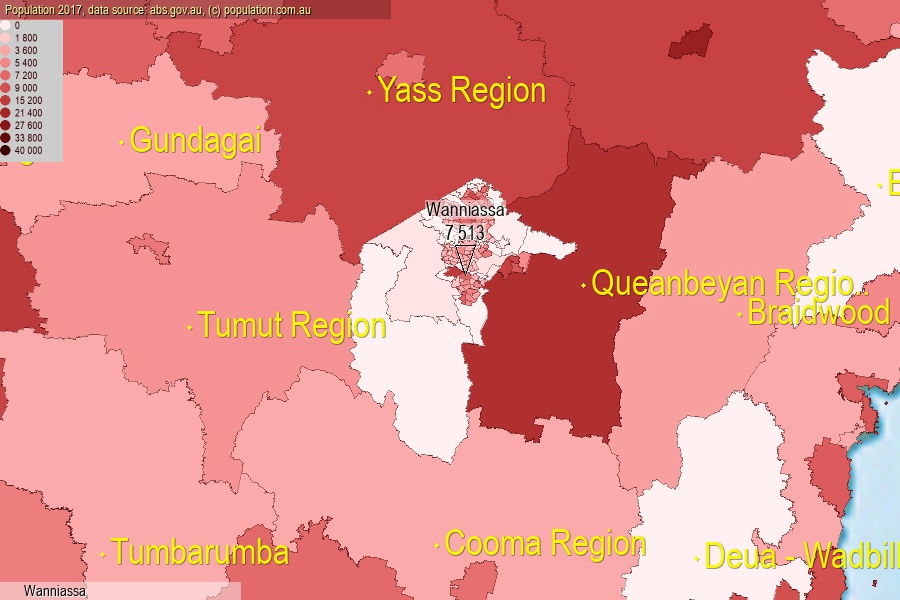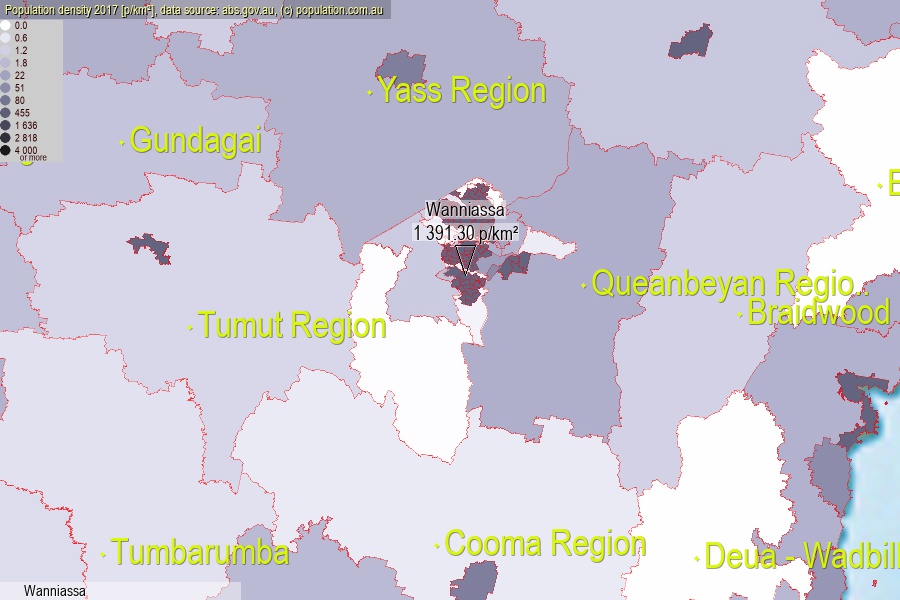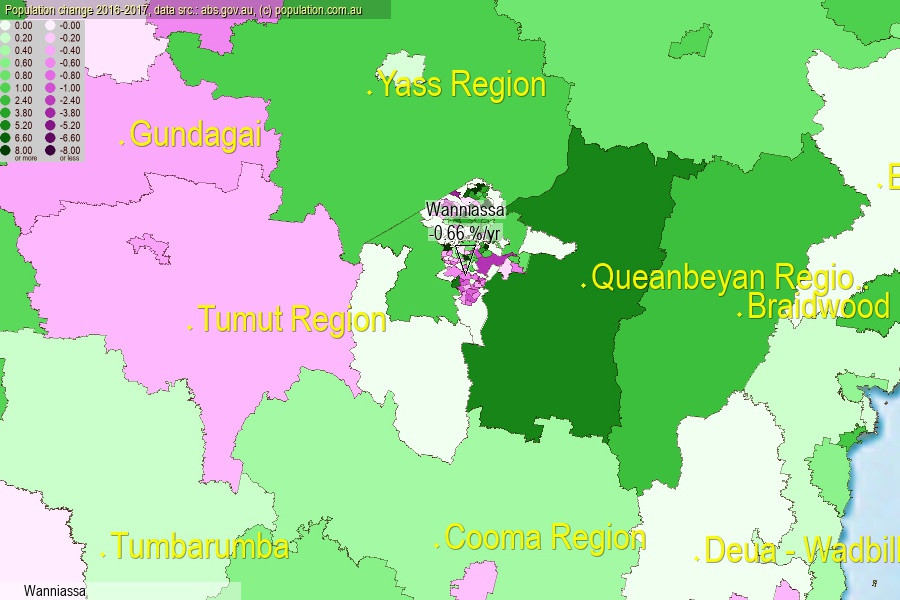 population.com.au
population.com.auLast official estimated population of Wanniassa (as Statistical Area Level 2) was 7 513 people (on 2017-06-30)[2]. This was 0.03% of total Australian population and 1.792% of ACT population. Area of Wanniassa is 5.40 km², in this year population density was 1 391.30 p/km² . If population growth rate would be same as in period 2016-2017 (-0.66%/yr), Wanniassa population in 2025 would be 7 125. [0]



Click to enlarge. Wanniassa is located in the center of the images.
Population [people], population density [p./km²] and population change [%/year] [2]
View borders » (new window) [4]
[1991-1992] -0.82 %/Yr.
[1992-1993] -2.73 %/Yr.
[1993-1994] -1.88 %/Yr.
[1994-1995] -2.62 %/Yr.
[1995-1996] -1.68 %/Yr.
[1996-1997] -1.79 %/Yr.
[1997-1998] -1.51 %/Yr.
[1998-1999] -0.89 %/Yr.
[1999-2000] +0.07 %/Yr.
[2000-2001] -0.42 %/Yr.
[2001-2002] -1.06 %/Yr.
[2002-2003] -0.71 %/Yr.
[2003-2004] -2.65 %/Yr.
[2004-2005] -1.37 %/Yr.
[2005-2006] -0.30 %/Yr.
[2006-2007] +0.25 %/Yr.
[2007-2008] -1.00 %/Yr.
[2008-2009] -0.22 %/Yr.
[2009-2010] -0.40 %/Yr.
[2010-2011] -1.34 %/Yr.
[2011-2012] -0.67 %/Yr.
[2012-2013] -0.74 %/Yr.
[2013-2014] -1.92 %/Yr.
[2014-2015] -1.71 %/Yr.
[2015-2016] -0.88 %/Yr.
[2016-2017] -0.66 %/Yr.
[0] Calculated with linear interpolation from officially estimated population
[1] Read more about SA2 and Australian Statistical Geography Standard (ASGS) on abs.gov.au
[2] Population data from Australian Bureau of Statistics (Population and density: 2017; change: 2016-2017)
[3] Digital Boundaries: Australian Statistical Geography Standard (ASGS) 2016.
[4] Border coordinates are simplifyed using Ramer-Douglas-Peucker algorithm.